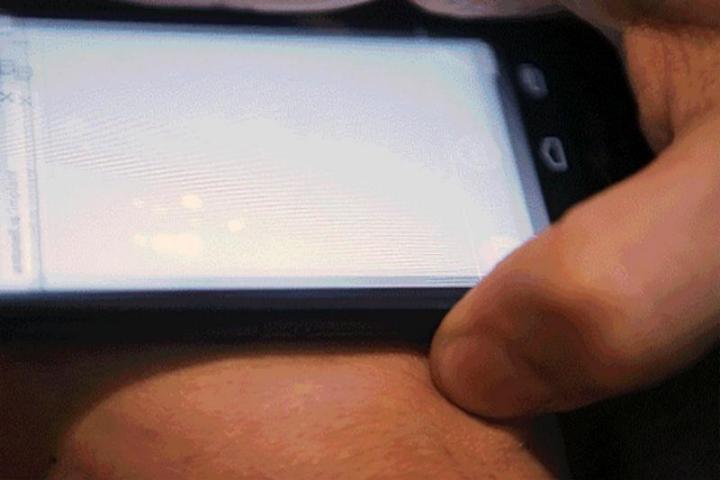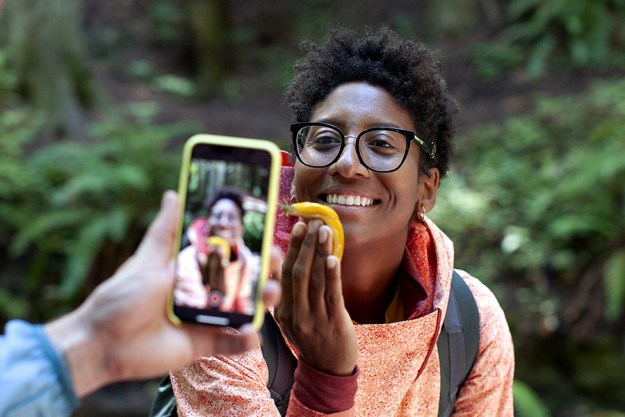
Getting a tattoo hurts, but if you follow artist Anthony Antonellis’ lead, things are about to get even more painful: He got the world’s first “digital tattoo,” an RFID chip implanted in his hand — and the process is a little more involved than applying ink to skin.
Antonellis had the miniscule chip implanted by a Brooklyn body modification artist, who sliced his hand open, inserted the implant in a small glass capsule, and stitched it closed. You can watch the video if you want to confirm that you never, ever want to do this to your body.
Even though the implantation looks grody, the end effect is pretty cool.

When Antonellis places his phone above his implant, one of his custom GIFs pops up – so the implant works as a storage unit for digital art. Antonellis can change the contents of the chip on his phone, so he doesn’t have to physically retrieve it every time he wants to put new art on it. He hopes to grow the project to get other artists in on the act.
“This animated GIF, which is my favicon, is actually the first image I uploaded and I haven’t changed it yet,” says Antonellis. And the chip doesn’t only hold GIFs. “It can store files other than GIFs, such as JPGs, MIDI files, or even ASCII art. I troubleshoot the app and experiment using un-implanted NFC tags. Once I begin the crux of the project, the micro-curation, artists can submit any format as long as works within the size restriction,” Antonellis tells us.
Antonellis is developing an app that will work with this type of implant. “The app acts as an interface to download the GIF from the chip to an Android device without having to be online,” he says. “It also displays extended information about the artwork such as a description or links to the artist’s website. Since the app is still being written, a simplified version of its functionality is possible by using NDEF data. The chips NDEF message loads a URL which displays a mirrored copy of what’s on the implant.”
Antonellis has big plans for the project. He anticipates using Arduino, an open platform for making interactive objects. “My presence would activate the object. Arduinos will be used to interface and engage with the chips other functions,” he explains. “With Arduino I can build stand-alone digital displays that can receive and showcase the chip content. The GIF storage is using just one possibility of the implant and there are lots of others I’m excited to explore. I like finding creative ways to work within restrictions and limitations, and in that way the chip has a lot of parallels to the GIF file format.”
While it might seem out there to implant a chip in your body, it’s not so different than getting piercings or regular tattoos — the incision is small, and considering how many people get invasive plastic surgery, a teeny little chip in your hand doesn’t exactly measure as extreme body modification.
Other people have implanted chips before, though not for the express purpose of spreading art. The first RFID implant occurred in 1998, when British professor Kevin Warwick put a chip in his arm capable of opening doors, turning off lights, and reportedly even chilling his wine.
The trend caught on. A surveillance company put implants in workers, and interest among hobbyists is robust enough that a “how to DIY implant” video made it to Forbes. You don’t have to be an expert tech tinkerer to use the technology; Antonellis says he learned a lot about RFID as he went along. “It was a learning experience, I came into this with almost zero knowledge of RFID followed by a month of obsessive research of the underlying technology as well the physical implant. It was interesting to learn about the history of implanting,” he says.
So will the next chapter in the history of implanting feature RFID implant art as a movement or a footnote? It’s too soon to tell (and most of us are way too squeamish to get one) – but it will be interesting to see what adventurous digital artists do with this technology.
